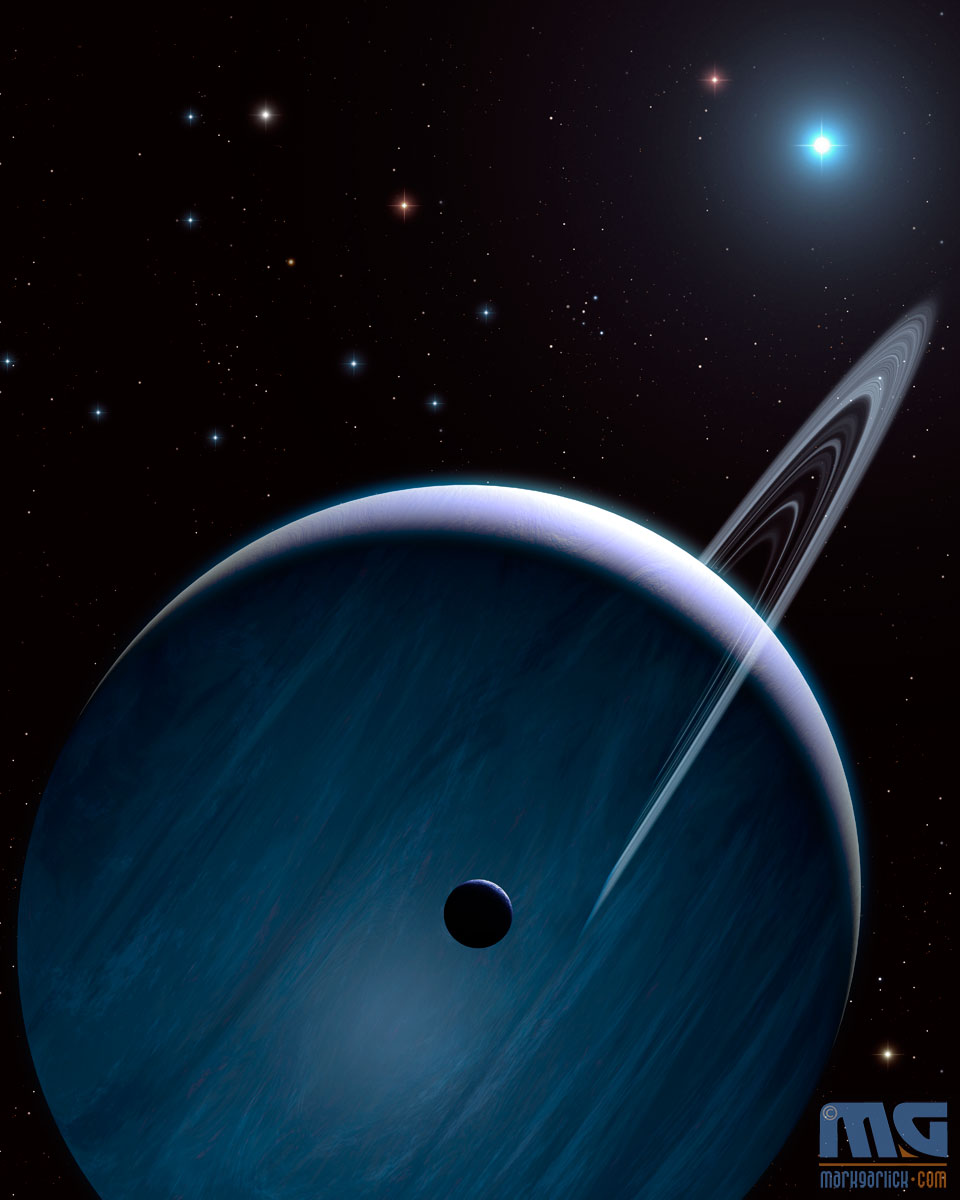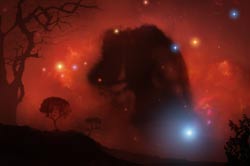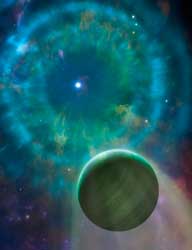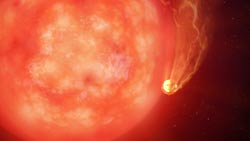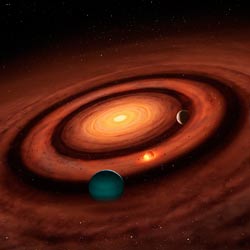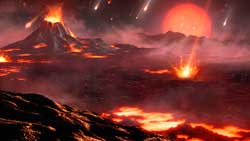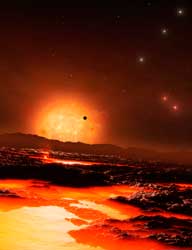Scientists at Sheffield University, UK, used computational N-body simulations of star-forming regions
to show that the 'BEAST' planetary systems - planets orbiting massive stars - can form from the
capture of a free-floating planet, or the direct theft of a planet from one star to another, more
massive star. They find that this occurs on average once in the first 10Myr of the evolution of a
star-forming region, and that the semimajor axes of the hitherto confirmed BEAST planets (290 and
556 AU) are more consistent with capture than theft. Their results lend further credence to the
notion that planets on more distant (>100 AU) orbits may not be orbiting their parent star. This
image shows such a planet, orbiting a star that is not the one it was born orbiting.
Details
Title: Stolen Exoplanet
Category: Exoplanets
Date: Sep 2022
Client: Sheffield University
Medium: Blender
Keywords:
More Exoplanets
